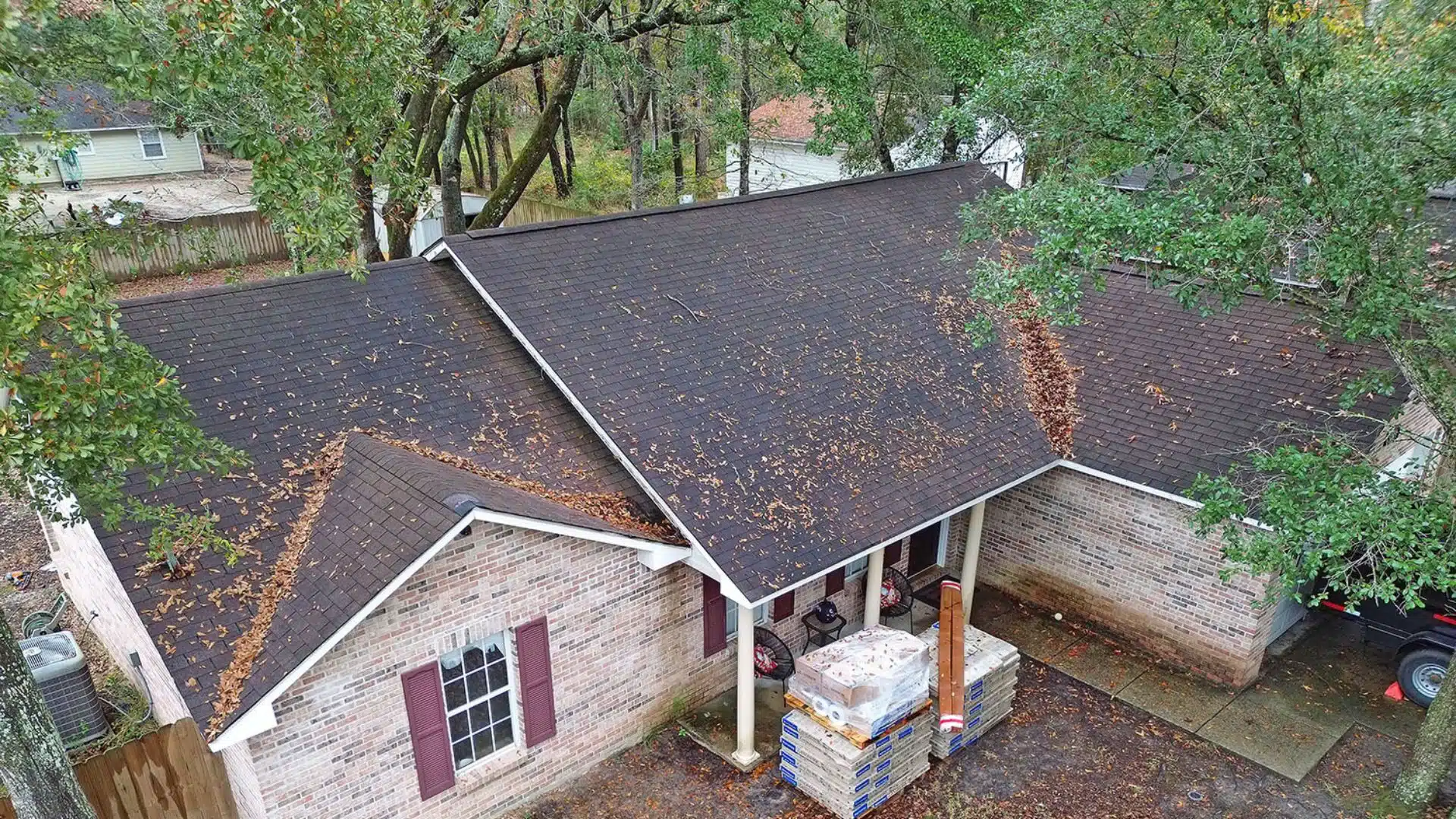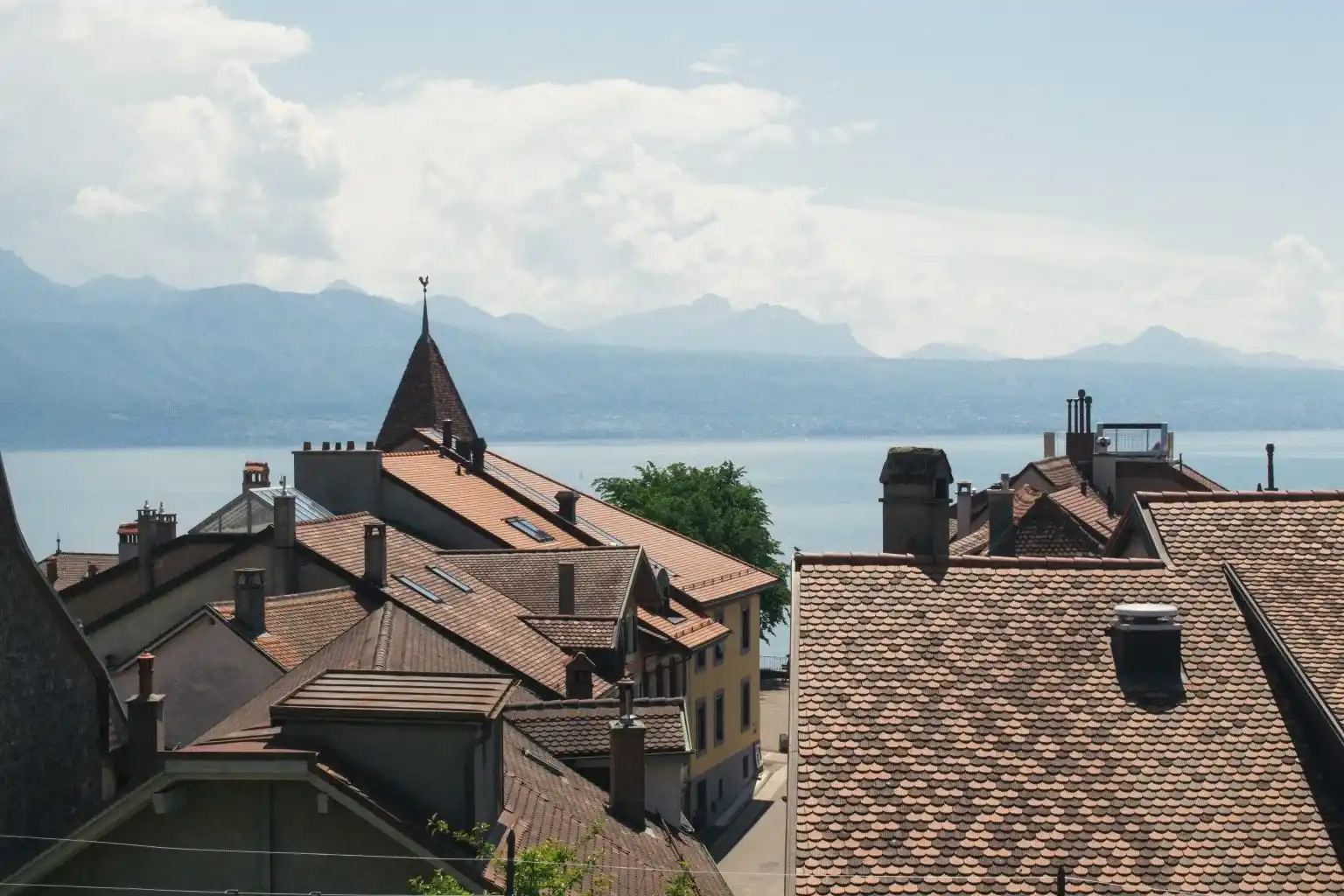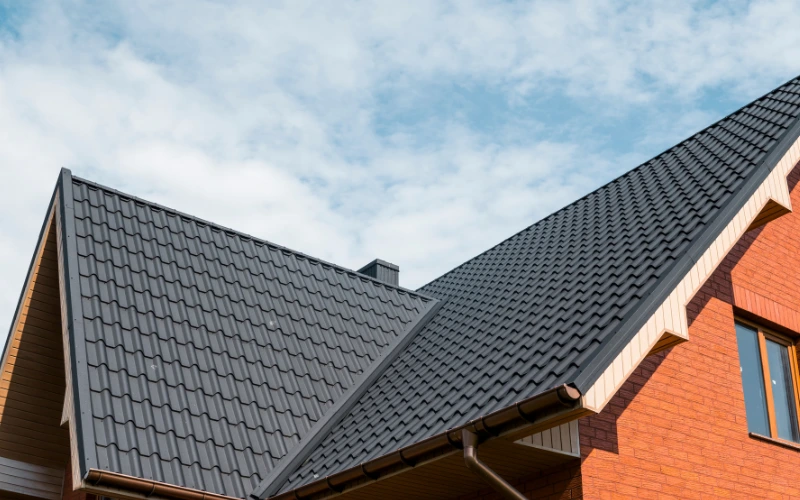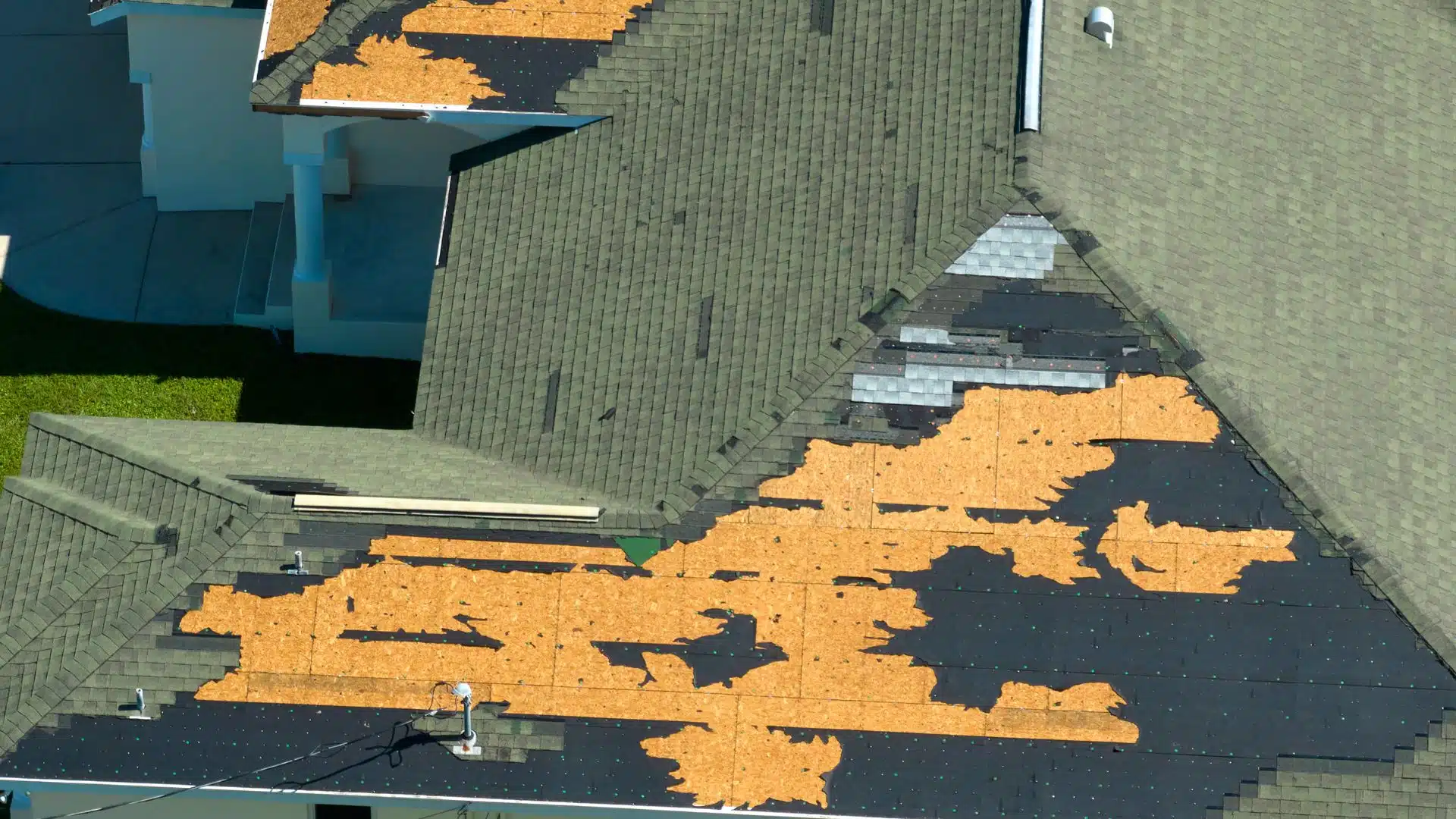MS Gulf Coast Roofs—Built to Endure, Prone to Erode
Living along the Mississippi Gulf Coast means weathering salty breezes, humid summers, and powerful storm systems—all of which take a toll on your home, especially your roof. Over time, these conditions contribute to what experts call “normal wear and tear.” This natural aging process differs from sudden or preventable damage and occurs even with high-quality materials and proper installation. Understanding the distinction is key to maintaining your home’s value and structural integrity. If you’ve been searching for a roofer near me to assess your aging roof, knowing what qualifies as normal wear can help you plan timely inspections and maintenance.
Common Climate Culprits: What Causes Roof Wear on the MS Gulf Coast
A. High Humidity & Moisture Exposure
Roofs on the Gulf Coast battle constant humidity, which fosters the growth of mold, mildew, and algae—especially in shaded or poorly ventilated areas. Over time, moisture can seep into vulnerable sections, causing wooden components to rot or metal to corrode. These issues may not always demand emergency repair, but they do represent the type of slow, natural wear expected in this region. For homeowners along the coast, a roofer Gulfport MS locals rely on can help assess when that wear crosses the line into damage.
B. Intense Sun, UV, and Heat
The Mississippi sun is no joke. Prolonged exposure to UV rays can cause shingles to become brittle, curl, or fade in color. Roof surfaces, particularly on the southern slopes, experience accelerated aging due to daily thermal expansion and contraction. Even high-end shingles can lose granules over time—a sure sign of normal wear. If your attic is consistently overheating or you’re noticing roof discoloration, it may be time to consult a professional for an inspection.
C. Storms, Rain, and Wind
Mississippi Gulf Coast storms don’t need to be hurricanes to wreak havoc. Even moderate wind events can loosen shingles or allow debris to leave small abrasions on the surface. Over several seasons, this micro-damage adds up. This isn’t considered “storm damage” in the insurance sense—it’s normal wear. Still, those minor issues can develop into serious problems if ignored. Annual checkups by a qualified roofing company can catch those early warning signs.
D. Aging Roofing Materials
Every roofing material has a shelf life. Asphalt shingles may start to crack or curl after 10–15 years, especially in coastal climates. Metal roofing may develop surface corrosion or loose fasteners, while tiles might crack as mortar deteriorates. These changes often happen gradually and are generally expected with age—especially under Gulf Coast conditions. A seasoned roofer Gulfport MS homeowners trust can differentiate between acceptable wear and emerging threats to your home’s structure.
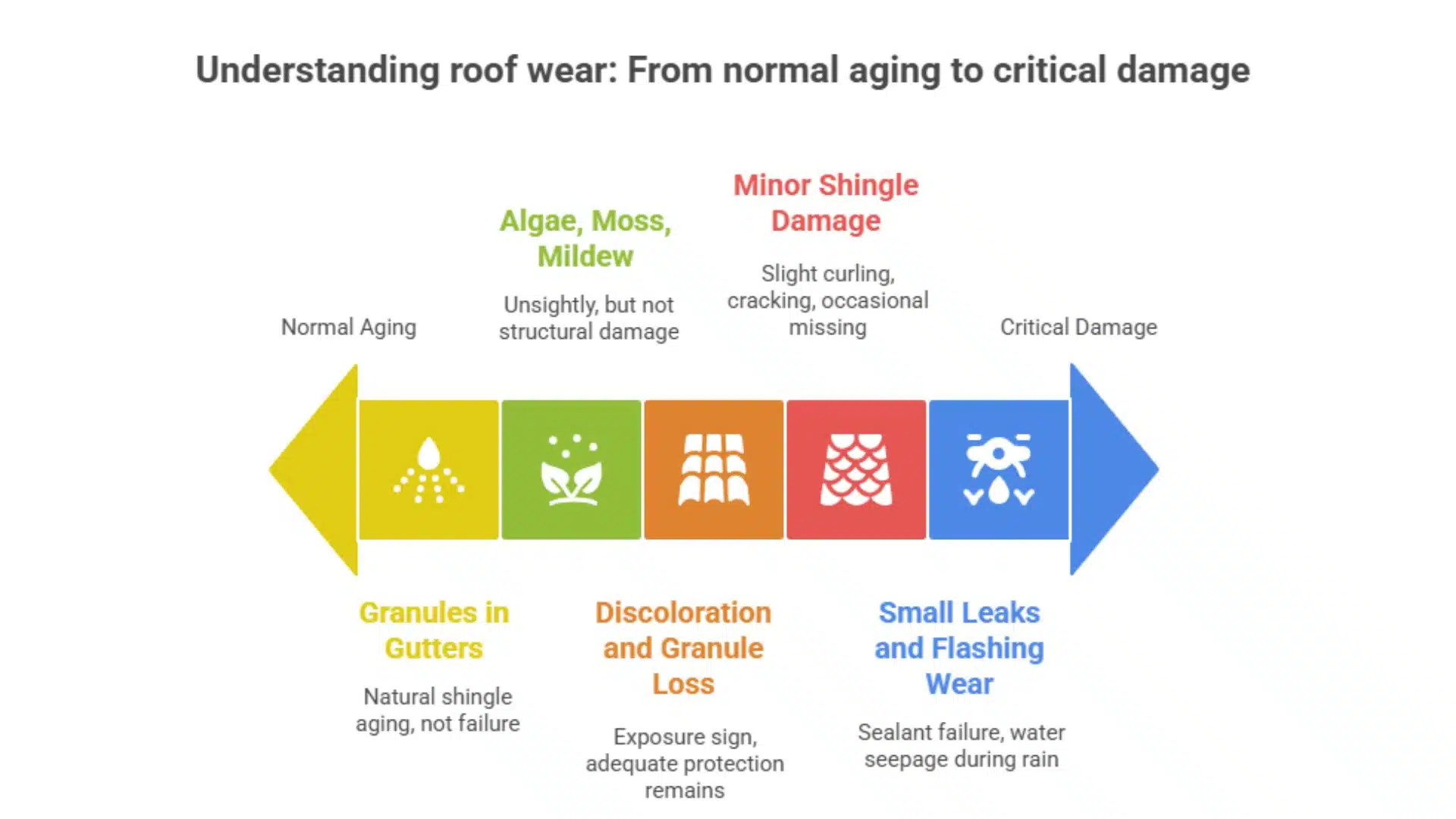
What Counts as Normal Wear and Tear?
A. Minor Shingle Damage
It’s normal for shingles to show signs of wear after years of exposure. You may notice slight curling, cracking, or even the occasional missing shingle—especially after a few storm seasons. These signs, while not immediately alarming, can reduce your roof’s overall efficiency. The key is whether the damage causes leaks or structural issues. If not, it’s typically considered normal. Still, it’s wise to have a roofer near me perform an inspection to ensure your roof is functioning as it should.
B. Discoloration and Granule Loss
Asphalt shingles are designed to shed granules over time. You’ll often find these granules in your gutters or at the base of downspouts—especially after heavy rain. While it might look concerning, this is a natural process of aging shingles. Similarly, fading or discoloration, particularly on sunny, south-facing sides of the roof, is common in the Mississippi Gulf Coast. It’s a sign of exposure, not failure. A trusted roofer Gulfport MS homeowners rely on can confirm whether your shingles still offer adequate protection.
C. Algae, Moss, and Mildew Streaks
In coastal humidity, it’s almost inevitable that your roof will develop dark streaks or patches of moss over time. These growths can be unsightly, but they’re not automatically signs of damage. As long as the growth hasn’t compromised the roof’s structure or caused water intrusion, it falls under the “normal wear” category. Regular cleanings and gentle pressure washing can help. For a long-term solution, consult a roofer near me to evaluate whether zinc or copper strips could reduce future growth.
D. Small Leaks and Flashing Wear
Minor leaks are often part of an aging roof—especially around flashing, skylights, or chimneys. Over time, sealants dry out, flashing may lift slightly, and water can seep through during intense rains. These small issues, when repaired quickly, are not cause for alarm. In fact, catching and fixing them early is a sign of good maintenance. A proactive roofer Gulfport MS homeowners call before storm season can help you stay ahead of bigger problems.
E. Granules in Gutters
If you’ve cleaned your gutters and noticed a sandy, gritty material, don’t panic—that’s just your shingles aging naturally. This phenomenon is especially common after a hot summer or a major rainstorm. Granule shedding increases as the roof nears the end of its service life, but it doesn’t automatically mean your roof has failed. A roofing contractor in Gulfport MS can tell you if the shedding is normal or if it’s time to start planning for replacement.
What’s Not Normal Wear and Tear?
While gradual aging is expected, certain types of damage go beyond “normal.” These situations often require immediate repair and may be covered by insurance.
A. Storm-Driven Leaks and Damage
If your roof suddenly springs a major leak right after a storm or hurricane, that’s not normal wear—it’s damage. Mississippi Gulf Coast storms are strong enough to tear shingles off entirely or push rain up under flashing. This level of destruction typically calls for emergency repair or replacement. Homeowners should call a roofer Gulfport MS certified for storm restoration to assess the damage and help with claims.
B. Sagging or Structural Issues
If you notice a dip or sag in your roofline, this is a red flag. Structural sagging is not part of the natural aging process—it indicates underlying rot, water damage, or even framing failure. These issues are beyond cosmetic and require immediate professional attention. Don’t wait; reach out to a roofing company in Gulfport, MS who offers full structural evaluations.
C. Impact from Debris or Limbs
If a tree limb or piece of flying debris punctures your roof during a storm, that’s not wear and tear—it’s impact damage. These types of incidents often result in compromised underlayment or insulation and require fast action to prevent mold and rot. Only an experienced roofer Gulfport MS professionals recommend should handle emergency tarping or repair in these cases.
D. Improper Installation or Defects
Poor workmanship is never part of expected roof wear. Misaligned shingles, exposed nails, or inadequate flashing are defects—and they usually lead to problems long before your roof’s natural lifespan ends. If your roof is only a few years old and showing issues, it may be worth getting a second opinion from a roofer near me with a reputation for thorough evaluations and quality craftsmanship.
Why Gulf Coast Roofs Age Faster
Mississippi’s subtropical climate doesn’t just age you—it ages your roof too. Roofs in the Gulf Coast region often face a shortened lifespan compared to other parts of the country due to intense humidity, frequent storms, salt-laden air, and scorching UV exposure. Shingles that might last 25–30 years elsewhere may only survive 15–20 here, especially without proper maintenance. Even metal roofs, which are generally more resilient, can develop corrosion from salty coastal winds. That’s why it’s crucial to partner with a roofer near me who understands regional wear patterns and can help you plan accordingly.
Protecting Your Investment: Proactive Maintenance Tips
While you can’t control the weather, you can control how your roof responds to it. Regular maintenance is the key to extending your roof’s lifespan and preventing normal wear from becoming costly damage. Start with twice-a-year inspections, ideally in spring and fall, and always after major storms. Keep gutters clear of debris, trim back overhanging limbs, and remove moss or algae growth early. If you see granule buildup or cracked shingles, call a professional. A roofer Gulfport MS homeowners trust will help you make minor repairs before they snowball into major headaches.
Know the Signs, Act Early
Living along the Mississippi Gulf Coast means your roof is in a constant tug-of-war with the elements. Recognizing what counts as normal wear and tear versus actual damage can save you time, money, and stress. From fading shingles to aging flashing, these signs are all part of the natural roofing lifecycle in this region. But stay alert—what starts as a small issue can spiral fast. Don’t wait for a major storm to find out your roof was overdue for attention. If you’ve been Googling roofer near me, it’s time to connect with Integrity Roofing—the roofer Gulfport MS families rely on for honest evaluations and long-term protection.
FAQ Section
1. How often should I inspect my roof on the MS Gulf Coast?
Twice a year—once before hurricane season and once after—is recommended. Also inspect after major storms.
2. Is moss or algae on my roof a problem?
Not necessarily. It’s common in humid climates like the Gulf Coast. However, if left untreated, it can degrade roofing materials.
3. What are signs of normal roof aging?
Discoloration, granule loss, minor curling of shingles, and small leaks around vents or flashing are typical with age.
4. When should I call a professional roofer?
Call a roofer if you notice leaks, granules in gutters, sagging areas, or after any major storm event.
5. How long does a roof last on the Gulf Coast?
Most asphalt shingle roofs last 15–20 years due to weather exposure. Metal and tile roofs may last longer with proper care.

